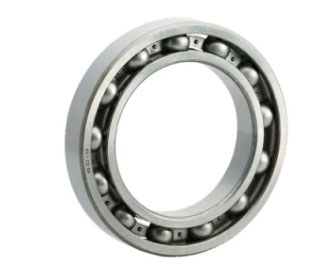Home / News / CNC Bearing Failure Analysis: Identifying Causes and Implementing Solutions for Enhanced Performance
CNC Bearing Failure Analysis: Identifying Causes and Implementing Solutions for Enhanced Performance
Introduction
CNC (Computer Numerical Control) machines are critical to modern manufacturing processes, providing high levels of precision, accuracy, and efficiency. Bearings play a vital role in the performance and reliability of these machines, and bearing failure can lead to costly downtime, reduced productivity, and compromised product quality. In this article, we will discuss the importance of CNC bearing failure analysis, common causes of failure, and steps to implement effective solutions to prevent bearing failure and enhance machine performance.
The Importance of CNC Bearing Failure Analysis
Bearing failure analysis is essential for identifying the root causes of bearing failure in CNC machines and implementing appropriate solutions to prevent future issues. Understanding why a bearing has failed can help manufacturers:
Minimize downtime and reduce maintenance costs by addressing the root cause of bearing failure.
Improve machine performance and extend bearing service life by implementing corrective measures.
Enhance product quality by maintaining optimal CNC machine operation.

Common Causes of CNC Bearing Failure
There are several common causes of bearing failure in CNC machines:
Contamination: Dirt, dust, and other contaminants can enter the bearing, causing excessive wear and premature failure. Proper sealing and regular maintenance can help minimize contamination.
Insufficient or improper lubrication: Inadequate lubrication can lead to increased friction, wear, and heat generation, ultimately resulting in bearing failure. Regular inspection of lubricant levels and the use of the correct lubricant type are essential to prevent this issue.
Overloading: Excessive loads can cause bearing deformation, excessive wear, and ultimately, failure. Ensuring that bearings are selected with the appropriate load capacity for the application can prevent overloading.
Misalignment: Misaligned bearings can cause uneven load distribution and increased stress on the bearing components, leading to premature failure. Proper installation and alignment are crucial to prevent this issue.
Excessive preload: While preloading can increase bearing rigidity and load capacity, excessive preload can lead to increased friction, wear, and heat generation, potentially reducing bearing life.
Implementing Solutions for Enhanced Performance
To prevent bearing failure and enhance the performance of CNC machines, several steps can be taken:
Proper installation and alignment: Ensure that bearings are installed correctly and aligned accurately to minimize stress and uneven load distribution.
Regular maintenance and inspection: Conduct routine maintenance and inspections to identify potential issues, such as lubrication problems, contamination, or misalignment, before they lead to bearing failure.
Appropriate bearing selection: Choose the right bearing type, size, and material based on the specific requirements of the CNC application, taking into account factors such as load capacity, speed, and environmental conditions.
Lubrication management: Implement a lubrication management program to ensure the correct type and amount of lubricant are used, and regular inspections of lubricant levels and quality are conducted.
Monitor bearing condition: Implement a condition monitoring system to track bearing performance and detect signs of potential issues before they result in bearing failure.
Conclusion
CNC bearing failure analysis is crucial to identifying the causes of bearing failure and implementing effective solutions to prevent future issues, ultimately enhancing machine performance, reducing downtime, and improving product quality. By addressing common causes of bearing failure, such as contamination, improper lubrication, overloading, misalignment, and excessive preload, manufacturers can ensure the reliable operation of their CNC machines and maximize productivity in their advanced manufacturing processes.
- Previous: CNC Bearing Load Capacity: A Critical Factor in Optimizing Performance and Reliability
- Next: CNC Bearing Materials: A Comprehensive Guide to Material Selection for Enhanced Performance and Reli













